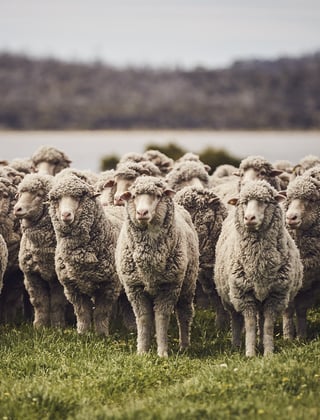Merino wool officially recognised as asthma and allergy friendly
As a result of research funded by Australian Wool Innovation, international certification body Allergy Standards Limited (ASL) has officially recognised bedding products made from Merino wool as asthma & allergy friendly®.
As a result of research funded by Australian Wool Innovation, international certification body Allergy Standards Limited (ASL) has officially recognised bedding products made from Merino wool as asthma & allergy friendly®.
By preparing independent scientific standards for products, ASL’s aim is to help create the healthiest possible indoor environment for individuals with asthma and allergies. ASL works with a number of patient advocacy groups, charities and government bodies across the world including the Asthma and Allergy Foundation of America.
In its rationale for issuing its new certification standard (ASP: 02-25/101) for bedding containing Merino wool, ASL references results contained in four recent research papers1, 2, 3, 4 funded by AWI.
ASL states: “There is a growing body of evidence to suggest that high quality, fine Merino wool is non-irritant and of low risk to those with sensitive skin. A recent report reviewing the literature on the subject found that a coarse fiber diameter (>30-32μm) will induce a cutaneous irritation that is not observed with finer Merino wool. The effects on patients with mild-to-moderate Atopic Dermatitis wearing Merino clothing was also recently examined in several clinical studies carried out in Australia and the US.”
The major study1 conducted by an expert group of allergists, immunologists, and dermatologists from across the globe, reviewed the past 100 years of research to assess claims that wool causes allergy. This analysis, published as Debunking the Myth of Wool Allergy, found no evidence that wool is an allergen.
The study found that any skin irritation caused by a fabric was due to the incidence of coarse fibres (ie fibres with a large diameter) protruding from the fabric and that this cause is independent of fibre type; it is not due to the fibre type being wool. Skin irritation can just as readily be caused by coarse synthetic fibres, such as acrylic and nylon, as by coarse wool fibres.
Importantly, the study found that suitably selected superfine Merino products are healthy for the skin, especially for those with the most sensitive skin. Superfine Merino wool fibres bend easily, causing minimal or no skin irritation.
The study also found that known allergens applied during textile processing are minimally present in wool garments today given current industry practices and are unlikely to lead to allergic reactions.
Furthermore, recent studies2, 3, 4 suggest that contemporary superfine Merino wool with their reduced fibre diameters in fact benefit eczema management.
AWI’s Program Manager for Fibre Advocacy & Eco Credentials, Angus Ireland, says the endorsement by ASL of Merino wool was a direct result of investment in scientific research by ÁWI on behalf of Australian woolgrowers.
“Collecting the evidence that wool is not an allergen was the first step in overcoming the misconception that people with eczema or even those with sensitive skin should not wear superfine wool next to the skin ,” he said.
“Our second aim was to have our research results recognised more widely by allergists, dermatologists and physicians – and so it is very rewarding to see bodies such as ASL now recognising Merino wool as asthma and allergy friendly.
“The ultimate aim is that this research will lead to increased consumer demand for products made using Australian Merino wool.”
Australia produces 80 per cent of the world’s supply of superfine Merino wool (≤ 18.5 micron).
References
- Zallmann M., Smith P. K., Tang M.L.K., Spelman L.J., Cahill J.L., Wortmann G., Katelaris C.H., Allen K.J., Su J.C. Debunking the Myth of Wool Allergy: Reviewing the Evidence for Immune and Non-immune Cutaneous Reactions. Acta Derm Venereol. 97(8), 906-915 (2017).
- Su, J. C. et al. Determining Effects of Superfine Sheep wool in Infantile Eczema (DESSINE): a randomized paediatric crossover study. J. Dermatol. 177, 125–133 (2017).
- Spelman L.J., Supranowicz M.J., Davidson K.A., Johnston J.J., Yau B., and Holland T.L. An Investigator Blinded, Clinical Trial Assessing the Efficacy of Superfine Merino Wool Base Layer Garments (SMWBG) in Children with Atopic Dermatitis (AD) Measuring SCORAD1, EASI2, POEM3 and DSA4 Scores. Biomedical Journal of Scientific & Technical Research. 7(1) (2019)
- Fowler, J. F, Fowler, L. M. & Lorenz, D. The Effects of Merino Wool on Atopic Dermatitis Using Clinical, Quality of Life, and Physiological Outcome Measures. American Contact Dermatitis Society, 30 (3), 198–206 (2019).














